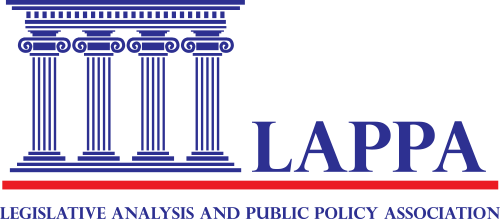
Overdose Fatality Review Access to Information
states help overdose fatality reviews (OFRs) effectively identify system gaps by having statewide laws that expressly authorize an OFR to obtain certain disclosure‐protected information from state and/or local entities, as of January 2024.
What are overdose fatality reviews and why are they important?
Overdose fatality reviews (OFRs)—also called OFR teams, boards, panels, committees, or commissions—examine and attempt to understand the circumstances leading to a fatal drug overdose. [1]Model Overdose Fatality Review Teams Act, LEG. ANALYSIS & PUB. POLICY ASS’N (Feb. 2021), https://legislativeanalysis.org/model-overdose-fatality-review-teams-act/. A key component of OFRs is their multidisciplinary nature, bringing together professionals across sectors such as mental and behavioral health, criminal justice, healthcare and emergency services, social services, and public health. [2]Melissa Heinen & Mallory O’Brien, Overdose Fatality Review: A Practitioner’s Guide to Implementation, BUREAU OF JUSTICE ASSISTANCE, OFFICE OF JUSTICE PROGRAMS, U.S. DEP’T OF JUSTICE & THE U.S. CENTERS FOR DISEASE CONTROL AND PREVENTION (July 2020), https://www.ofrtools.org/Content/Documents/Articles/Overdose_Fatality_Review_Practitioners_Guide.pdf. The primary function of OFRs is to compile and analyze data from several sources to conduct case-by-case reviews of fatal overdose deaths. Using this information, an OFR can collectively identify areas for improvement, develop strategies, and make informed recommendations. [3]Emily Costello, et al., Evaluation Profile for Overdose Fatality Reviews, NAT’L CENTER FOR INJURY PREVENTION AND CONTROL, U.S. CENTERS FOR DISEASE CONTROL AND PREVENTION (2020), https://www.cdc.gov/drugoverdose/od2a/pdf/OD2A_EvalProfile_OverdoseFatalityReviews_508.pdf
Due to the relatively recent emergence of OFRs, there is limited systematic research related to this strategy. [4],Jacquelyn Gilbreath & Jessica Reichert, Overdose Fatality Review Teams Literature Review, ILLINOIS CRIMINAL JUSTICE INFO. AUTHORITY (Feb. 2021), https://icjia.illinois.gov/researchhub/articles/overdose-fatality-review-teams-literature-review. [5]Bradley Ray, et al., Comparing Practices Used in Overdose Fatality Review Teams to Recommended Implementation Guidelines, J. PUB. HEALTH MGMT. & PRACTICE (Nov. 2022), https://journals.lww.com/jphmp/fulltext/2022/11001/comparing_practices_used_in_overdose_fatality.6.aspx. Despite this, case review models used in other settings, such as child fatality reviews, are effective in improving policy and practice, [6]Id. and initial findings from OFRs are promising. [7],Gilbreath & Reichert, supra note 4.[8]Erin Haas, et al., Local Overdose Fatality Review Team Recommendations for Overdose Death Prevention, HEALTH PROMOTION PRACTICE, (Sept. 2018), https://doi.org/10.1177/1524839918797617. Research suggests that local OFRs produce recommendations more quickly than national agencies and organizations. [9],Gilbreath & Reichert, supra note 4.[10]Haas, et al., supra note 8. This is crucial for rapidly responding to changing trends in substance-related mortality.
Information collection is a key challenge for overdose fatality review
To the extent possible, information collected prior to an OFR case review should include medical records, substance use disorder treatment records, medical examiner reports, criminal justice records, and social services records. [11]Overdose Fatality Review: National Standards, BUREAU OF JUSTICE ASSISTANCE, OFFICE OF JUSTICE PROGRAMS, U.S. DEP’T OF JUSTICE & THE U.S. CENTERS FOR DISEASE CONTROL AND PREVENTION (June 2022), https://www.ofrtools.org/resource/8f1606e8-aedd-49fa-a8f1-802db72901b7. At the same time, OFRs must abide by the Health Insurance Portability and Accountability Act’s (HIPAA) Privacy Rule, 42 C.F.R. Part 2, and other federal and state confidentiality laws. Overly restrictive or incorrect interpretations of these laws can impede the case review process. [12]Model Overdose Fatality Review Teams Act, supra note 1. Even where OFRs operate on a local level, statewide legislation can be used to specify—and thus authorize—many types of disclosure-protected information that local OFRs can access. Encouraging full information sharing is an important consideration, as it allows OFRs to properly respond to specific knowledge gaps.
Using data across sectors, OFRs provide targeted prevention recommendations
By analyzing information held by multiple agencies and organizations, a local OFR can piece together a timeline of public health and safety services that were offered to the decedent, referrals to other providers, gaps in services, and missed opportunities. The OFR can also use cross-sector data to assess any social determinants of health that influenced the deceased individual’s behavior and decision-making. [13]Id.
OFRs can improve cross-sector collaboration and accountability in communities
As OFRs bring together representatives from key sectors for problem-solving and strategic planning, the review process helps individual OFR members understand each agency’s role in overdose prevention. [14]Costello, supra note 3. OFRs increase team members’ knowledge of the resources available across other agencies and organizations as well as gaps in services and community-level needs and assets. [15],Id.[16]Heinen & O’Brien, supra note 2. As a result, OFRs increase member agencies’ shared accountability and collective responsibility in preventing future overdose deaths. [17],Costello, supra note 3.[18]Heinen & O’Brien, supra note 2.


